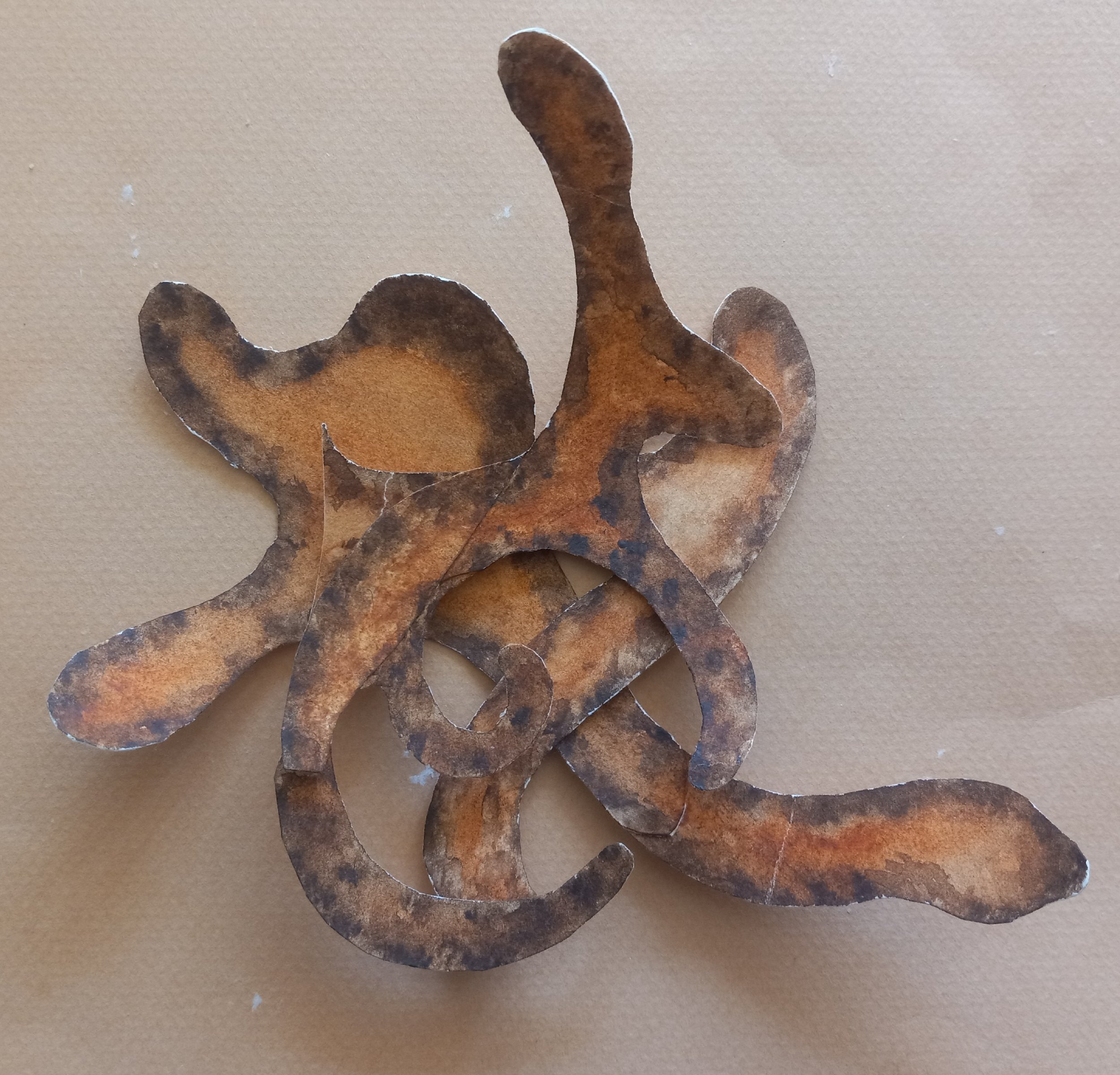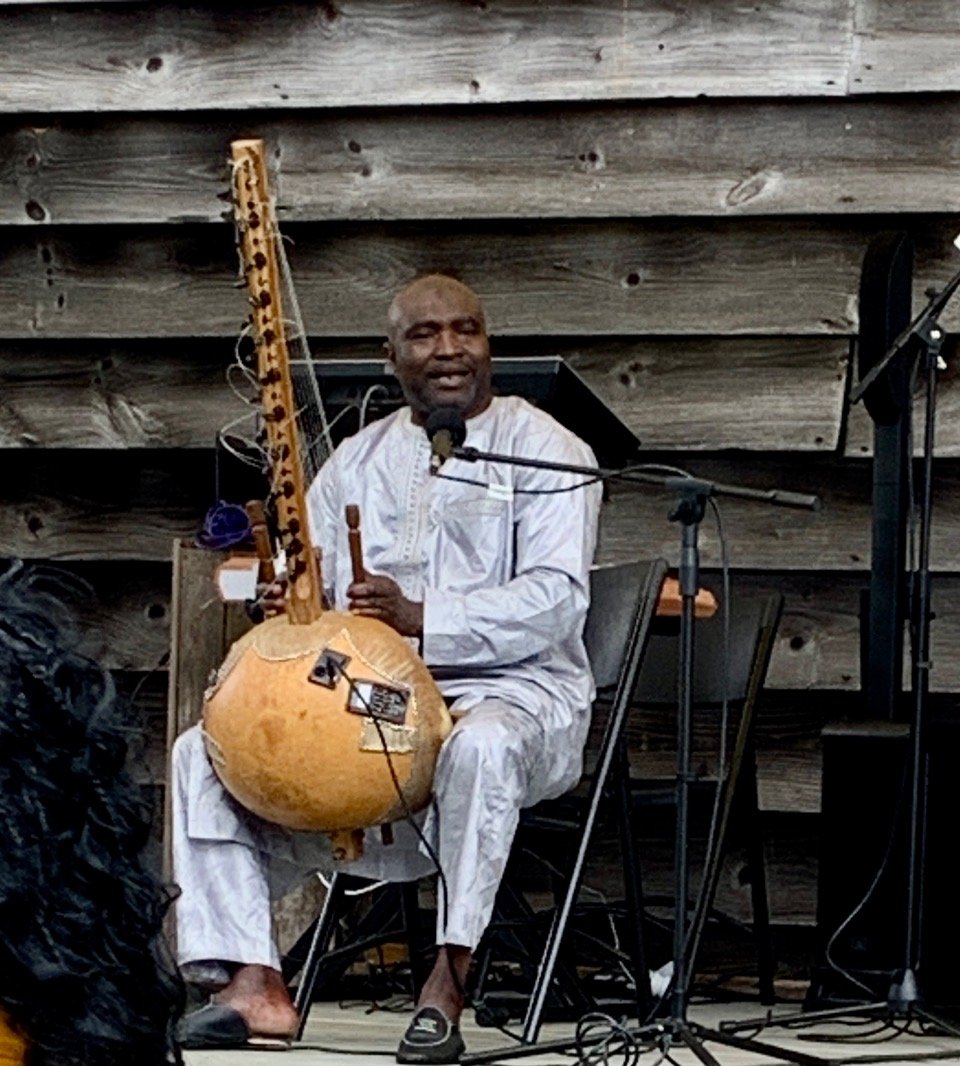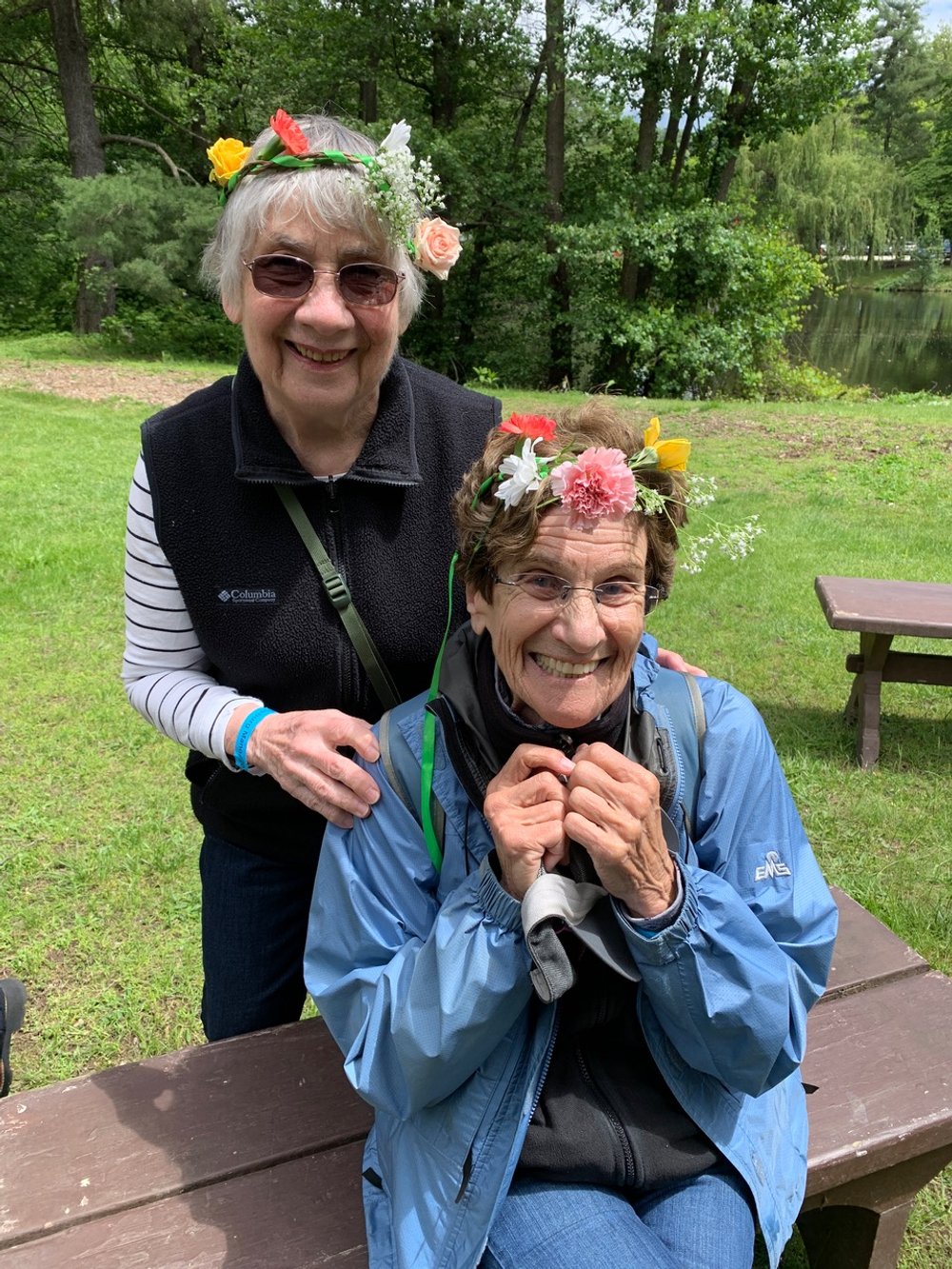The Art Summer Show: June 4 Opening!
The Weekly Construction Bulletin
The Sissman Chronicle
That Other Drink!
The majority of Kendal residents usually begin their morning battles with the existential exigencies of life with a jolt of caffeine contained in their beloved mugs of coffee. It is likely that this is true of morning risers throughout the west, but, unexpectedly, statistics show that the volume of coffee consumed around the world each year is exceeded by that of another drink—tea (which contains about half the concentration of caffeine). Tea is second in the quantity drunk around the world only to water.
Here are some facts about tea that I find especially interesting:
Tea is made from the leaves of a tropical shrub, Camellia sinenesis, first described in Chinese writings around 200 BCE. It is now widely grown in China, India and Ceylon, as well as a few other equatorial countries. In the spring, buds and tender leaves from these plants are harvested by hand plucking and processed immediately. The method of processing determines the color of the tea. Tea leaves spread out under the sun oxidize rapidly, turning the color of the leave to dark brown; these are the basis of black tea (which actually is mostly amber). If the freshly plucked leaves are immediately steamed, they preserve their natural color and are the source of green tea.
The differing tastes of tea are derived from different forms of Camellia, but many of the most unique flavors are introduced by add-ons during processing and by blending the leaved with introduced compounds. One of most widely admired Chinese tea, for example, lapsang souchong, is made by smoking its leaves over burning pine wood. One of the few varieties of tea available our bistro, Earl Gray (an 18th century British politician) gets it flavor from added bergamot.
After being processed, tea leaves are macerated. On the old days, they were then pressed into “bricks” for shipping.
Around the turn of the 20th century an entrepreneur named Thomas Sullivan invented the tea bag.
Tea drinking has spawned a great variety of utensils, from ornate samovars to the most finely decorated china teapots, cups and saucers.
Tea has influenced history in varying ways. Securing a stable source of tea may have been one of the motivations for the British occupation and rule over India during much of the 19th century. All Americans are familiar with the dumping of a load of tea from a British ship in Boson harbor as one of the preludes to the American Revolution.
Over the years, tea drinking has given rise to rituals. Here are brief descriptions of two of the most notable of these:
Japanese tea drinking was formalized to the smallest detail centuries ago. It takes place in a small tea house called a sukia. Participants must pass through a garden on their way to the sukia. The room is decorated by scrolls and paintings.
A small meal is served followed by three rounds of Macha, a green tea that is brewed in a kettle on a charcoal stove sunk into the ground. The tea must be drunk holding a handleless cup with both hands. The tea drinking is followed by a period of contemplation of the beauty ad fragility of life, Tea masters had to train for years before they could lead these ceremonies. Needless to say, modern life with its demands on time and work has drastically reduced the frequency and attendance at these ceremonies.
Another notable ritual for drinking tea is the British Afternoon Tea (what Americans call “High Tea”). Begun in the 17th century it became not just a tradition but a way of life: a sign of good taste and conviviality. Queen Victoria’s afternoon teas helped codify it. Traditionally afternoon tea is accompanied by small cucumber, tomato, egg or watercress sandwiches.
Throughout World War II, King George VI took tea with his family every day, an important contributor to the British spirit of resistance during the siege of Nazi bombing.
Norman J. Sissman
The Kendal Weekly Low-Stakes Poker Report
The aim is fun, not financial windfall. Fear not any Atlantic City high-rollers joining in. All skill sets are welcome. Stakes are 25-50 cents.
Want to join the fun? Call or text John Vacher: (404) 556-0557. He’ll even come and provide a short tutorial, so you’ll fit in seamlessly your very first Wednesday night.
For Your Funny Bone
Contributed by Barbara Bruno
Art by Hart
Louann wasn’t sure about Xizi’s offer of a makeover
Spring varsity tightrope was in full swing
Mitzi froze in front of the camera
Arlene respected truth-tellers, whoever they were
Sugarplum could do several things at once
Art and photos by Jane Hart
Drawing with Scissors, by Sheila Benedis
Hope for the Future
Art and photos by Sheila Benedis
In and Around Kendal
Conspiracy Theories Alert: Bears Are Now Using Camouflage!
Clearly a bear in green disguise—captured, luckily, by Bob Abramovitz.
Alida Garden Bounty
Photo by Edward Kasinec
The Grass Is Always Greener . . . Proof Positive
Photo by Hildegarde Gray
Snoozing in the Shade: Who Wouldn’t?
Photo by Edward Kasinec
Rockwood Hall Glories, Grand and Mini
The Great Lawn
Wild Whites
Photos by Edward Kasinec
Out and About at Pinkster
The annual Pinkster festival takes place in spring. The name is a variation of the Dutch word Pinksteren, meaning “Pentecost.” Pinkster in English refers to the festivals held by the Black populations of New York and New Jersey, particularly in the early 19th century. To the Dutch, Pinkster was a religious holiday, a chance to rest, gather, and celebrate Christian sacraments such as baptisms and confirmations. It also had a long tradition as a day of dance and merriment. For enslaved people, Pinkster was a time free from work, a chance to gather with family and friends. Over the centuries, Pinkster grew into a multifaceted celebration of African culture, featuring music, dance, drumming, storytelling and foodways that enabled enslaved and free Black Americans to reclaim their heritage and served as a form of joyful resistance against oppression.
Since the 1970s, New York has made efforts to resurrect Pinkster. Our own Sleepy Hollow Philipsburg Manor restoration has celebrated Pinkster since 1977. It’s the only true Pinkster recreation in North America. Every spring, it recreates an authentic celebration of Pinkster in North America, combining both Dutch and African traditions. For guests of all ages, Djembes and Dance—which includes a recreation of a colonial Pinkster festival—is a delightful and instructive experience. The occasion recognizes both slavery's tyranny in New York and its final defeat.
And this year, Ruth Dinowitz and Harry and Marianne Bloomfeld joined in the fun!
Traditional instruments (with some modern help)
With song and story-telling
Preparations for celebrating Pinkster
And the happy results!
The Weekly Kendal Low-Stakes Poker Report
The aim is fun, not financial windfall. Fear not any Atlantic City high-rollers joining in. All skill sets are welcome. Stakes are 25-50 cents.
Want to join the fun? Call or text John Vacher: (404) 556-0557. He’ll even come and provide a short tutorial, so you’ll fit in seamlessly your very first Wednesday night.
Weekly Construction Bulletin
From the desk of Ellen Ottstadt
I Never Knew That
The Beer Flood of London, 1814
London was once a prominent beer-brewing city. In the 1850s, the U.K. capital was home to the largest brewery in the world. London’s beer business was robust in the 19th century—and it was also the source of an industrial accident that sent thousands of gallons of beer flooding the streets.
It happened at the Horse Shoe Brewery, located at the corner of Great Russell Street and Tottenham Court. On the afternoon of Monday, October 17, 1814, one of the large iron rings used to hold together the brewery’s wooden fermentation tanks broke. The vat was massive: It stood about 22 feet high, and held roughly the equivalent of more than 3,500 standard barrels of the company’s porter beer.
Within an hour, the damaged tank burst, sending a gush of beer that broke through a wall and caused several more of the tanks on the premises to split open. More than 380,000 gallons of beer then rushed through the streets of St. Giles, a densely populated, poverty-stricken London neighborhood. The wave reached up to 15 feet high, and came crashing into nearby homes and businesses. Although everyone at the brewery survived, the London Beer Flood claimed the lives of eight people in the neighborhood.
In the aftermath, the media reported a respectful atmosphere as St. Giles residents reckoned with the tragedy; stories about locals scooping up as much beer as they could drink also emerged, although historians now dispute the likelihood of these reports. A hearing ultimately found that the brewery was not responsible, dubbing the incident an act of God.
Source: historyfacts.com
Contributed by Jane Hart
For Your Funny Bone
Contributed by Maria Harris
Contributed by Maria Harris
Dancing with Scissors, by Sheila Benedis
Dancing Figures I
Art and photo by Sheila Benedis
Art by Hart
Kay had hopes for winning next year’s Triple Crown
Preston worried incessantly
Venus needed a nap now and then
To their credit, Lucy’s friends never mentioned that Kent looked corrugated
Rona loved the spotlight
Art and photos by Jane Hart
In and Around Kendal
Far and Near, by Edward Kasinec
Lumbering Beeches . . .
with Green Streamers . . .
‘Tis the Season of the Goat
A feeding frenzy, by Carolyn Reiss
Siesta time after a lovely meal, by Mimi Abramovitz
“So glad we’re at Kendal, and not some place where an old goat is just a number, “ says photographer Jane Hart
May Kendal Birthdays
Photo by Harry Bloomfeld
Near and Far at KoH, by Carolyn Reiss
Waiting for the worm?
Our blue heaven
Out and About
A Visit to Croton Dam
One beautiful May day, Mimi Abramovitz, Henry Neale, and Caroline Urvater took a trip up to see the Croton Dam.
The Weekly Kendal Low-Stakes Poker Report
The aim is fun, not financial windfall. Fear not any Atlantic City high-rollers joining in. All skill sets are welcome. Stakes are 25-50 cents.
Want to join the fun? Call or text John Vacher: (404) 556-0557. He’ll even come and provide a short tutorial, so you’ll fit in seamlessly your very first Wednesday night.
Kendal Anniversary #20: A Dedication--Tree, Time Capsule, and Poetry
Our second anniversary celebration featured planting a beautiful—and indigenous—dogwood in the Sunnyside garden. Nearby, we also planted a time capsule to be opened in 20 years to remind Kendal residents in 2045 of those of us in 2025. Jean Eccleston, Hildegarde Gray, Muriel Fox spoke, and, to top it all off, Kendal Poet Llyn Clague read an ode to our community (scroll all the way down for Llyn’s lovely poem).
What’s In the Time Capsule?
Transcript of introduction by KoH CEO Jean Eccleston
Transcript of remarks by Hildegarde Gray
Transcript of summary of capsule’s contents by Time Capsule Chair Muriel Fox
View of KoH buildings
Quaker Values and Practices booklet
Annual report of KoH Residents Association
Spotlight issue
Kendal View magazine
List of Residents Association committees
List of Residents Association interest groups
List of book groups
Staff appreciation letter, backed by list of fund-raising appeals
Photo of staff members at Staff Appreciation Fund party
Photo of Facilities staff at Staff Appreciation Fund party
Photo of KoH staff group in Halloween costumes
List of local charities served by annual appeal
T-shirt from annual Alzheimer’s Walk
Mask worn by sick residents during the covid pandemic
Photo and crafts item from Tuesday Morning Club, where independent-living residents join Adirondack residents for weekly songs, crafts, and discussions
Instruction sheet, FAQ sheet, and monthly volunteers list from Co-pilots
List of KoH menus for one week
Photo of Executive Chef Eddie Dias in KoH kitchen
Photo of KoH dining staff
Photo of Healing Garden, adjacent to Clearwater
Promotional materials: brochure written by residents …celebration of 20th Anniversary
Group fitness schedule for March 2025
Fitness newsletter for March 2025
Calendar of events for month of May 2025
List of KoH events & concerts available in KoH video library, 2024-25
List of movies on demand available in KoH video library
List of operas shown Saturday afternoons by Opera Committee
Report of Committee on Lenape, the indigenous tribe whose land is occupied by KoH
Front page of New York Times, May 9, 2005, the day KoH was opened
Front page of New York Times, May 9, 2025
Front page of Journal News, May 9, 2025
A Sapling and a Capsule
Dedicated to the 20th Anniversary of Kendal on Hudson Llyn Clague
Collaborate, celebrate, commemorate, Twenty years to date, twenty years to come
We are gathered here to mark a milestone along the path of this place we call home. Standing on two decades of past success, to a Kendal two decades hence we present a gift from our vibrant present.
To honor the moment, we plant a tree that in time will grow and mature, and we bury a can affording the future cameos of our daily reality: sapling and capsule, symbol and sample, avatar of life, scraps and mementos.
Collaborate, commemorate, celebrate Twenty years to date, twenty to come
We honor the body of Kendal, the campus on this hill beside the gorgeous Hudson: four sand-colored buildings, solid examples of physical fact, their names iconic symbols of river boats floating on a river of green.
We honor the lives of the people of Kendal, from the first, a full score of years away, to the some fourteen score here on this day, to the latest moving in just yesterday, to you, another score of years from today.
Collaborate, commemorate, celebrate Twenty years to date, twenty to come
We honor the spirit of Kendal, sample and symbol embodied hourly in word and gesture of our people, in every item and object in the buried capsule, a spirit aspiring, past missteps, to move, through friendliness, to friendship, to community.
And we honor the spirit of community in the imagination, for only in imagination do we bond with you, in the future, as, in history, with Founders, a bonding more perfect in the imagination than on a real campus— sample and symbol of quintessential community.
Collaborate, celebrate, commemorate, Twenty years to date, twenty years to come









































































